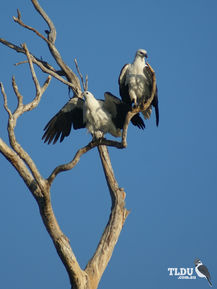
Shoppers Feedback:
Jan 17, 2017
Hello Ros,
I have now paid the invoice, but I would like to write to you just to say a big THANK YOU for getting me the Penguin!
The ChatterMate Penguin became a nice memory for me when I was in New Zealand, and I am so greatful to you for arranging so that I could have it! :-)
Thank you so much!!!!!!!!!!!
Regards,
Malin
Hi Ros,
Many thanks for your very kind email. I really appreciate your prompt reply!
I appreciate your advice regarding the decorations and customs. These are a gift for my daughter’s exchange student family so when she returns home on the weekend I will show her and see if she loves them as much as I do!
Thanks so very much again - I am truly grateful for your kind assistance.
Kind Regards
Bernadette
Ros,
Thanks again for the great customer service. It's a refreshing change!
Best regards,
Trevor
Hey Roz,
Thank you for your emails. Just loved my first order. The cute little Aussie bush critters are going to be used for an office Christmas decoration. My colleagues also liked them and talked about making an order to your site. I'll send you a photo when completed.
I'll be ordering more to send to my daughter's host family in America.
Fabulous service from you.
Kind regards,
Michelle
Thankyou. Order arrived today. One very happy grandson with his new beastly binoculars.
Regards,
Irene
- Home
- Wild Wonders
- Shop
- Aromas of Australia
- Australian Made
- Books
- Book Marks
- Christmas Decoration Sale
- Christmas Decorations
- Clocks
- Drink Holders
- Garden & Outdoor
- Gift Wrapping & Cards
- Home & Giftware
- Jewellery
- Keyrings
- New Products
- Pencils & Pen Holders
- Photo Frames
- Plush Toys
- Plush with Sound
- Sheepskin Rugs
- Stationery
- Stone Carvings
- Toys & Games
- Travel Goods
- Wedding
- Wild Figurines
- Wildlife Safety Products
- Wind Chimes
- Wine Charms
- View All Products
- Wildlife
- Australiana
- Explore
- Contact Us
White Bellied Sea Eagle

Quick Facts
| Length: | 80 cm |
| Height: | - |
| Weight: | 2 630 grams |
| Colour: | Mostly white with dark grey on the back and wings |
| Habitat: | Ocean waterways |
| Food: | Fish, turtles, sea snakes and other aquatic animals |
| Predators: | - |
| Status: | Endangered in Victoria, Vulnerable in SA & Tasmania and Secure in all other states and territories |
The White-bellied Sea-Eagle is the second largest raptor (bird of prey) found in Australia. The Wedge-tailed Eagle is mostly brown, with a wedge-shaped tail.
The White-bellied Sea-Eagle has white on the head, rump and underparts and dark grey on the back and wings. In flight the black flight feathers on the wings are easily seen when the bird is viewed from below. The large, hooked bill is grey with a darker tip, and the eye is dark brown. The legs and feet are cream-white, with long black talons (claws).
The sexes are similar. As in other raptors (birds of prey), Males (2.5 kg - 3.7 kg) are slightly smaller than females (2.8 kg - 4.2 kg).The wingspan is about 1.8 m - 2 m. Young Sea-Eagles are brown as juveniles than slowly become to resemble adults in a patchwork manner, acquiring the complete adult plumage by their fourth year.
White-bellied Sea-Eagles are a common sight in coastal and near coastal areas of Australia.
White-bellied Sea-Eagles are normally seen perched high in a tree, or soaring over waterways and adjacent land. Birds form permanent pairs that inhabit territories throughout the year.
The White-bellied Sea-Eagle feeds mainly off aquatic animals, such as fish, turtles and sea snakes, but it takes birds and mammals as well. It is a skilled hunter, and will attack prey up to the size of a swan. Sea-Eagles also feed on carrion (dead prey) such as sheep and fish along the waterline. They harass smaller birds, forcing them to drop any food that they are carrying. Sea-Eagles feed alone, in pairs or in family groups.
White-bellied Sea-Eagles build a large stick nest, which is used for many seasons in succession. The nest can be located in a tree up to 30m above the ground, but may also be placed on the ground or on rocks, where there are no suitable trees. At the start of the breeding season, the nest is lined with fresh green leaves and twigs. The female carries out most of the incubation of the white eggs, but the male performs this duty from time to time.
Last Updated: Sunday 14th July, 2013
BirdLife Australia - www.birdlife.org.au
BUSH e-TELEGRAPH
Signup for our monthly newsletter the "e-Telegraph"
Quick Links
Home | The Beginning | About The Land Down Under | Wild Wonders | Advertise on Wild Wonders | Christmas Decoration Sale | Christmas Tree Decorations | Drink Holders | Plush with Sound | Stone Carvings | Wildlife Wine Charms | Freebies | Australian Wildlife | Help Our Wildlife | Australiana | Photo of the Month | Explore The Land Down Under | Contact Us | Legal Notices

